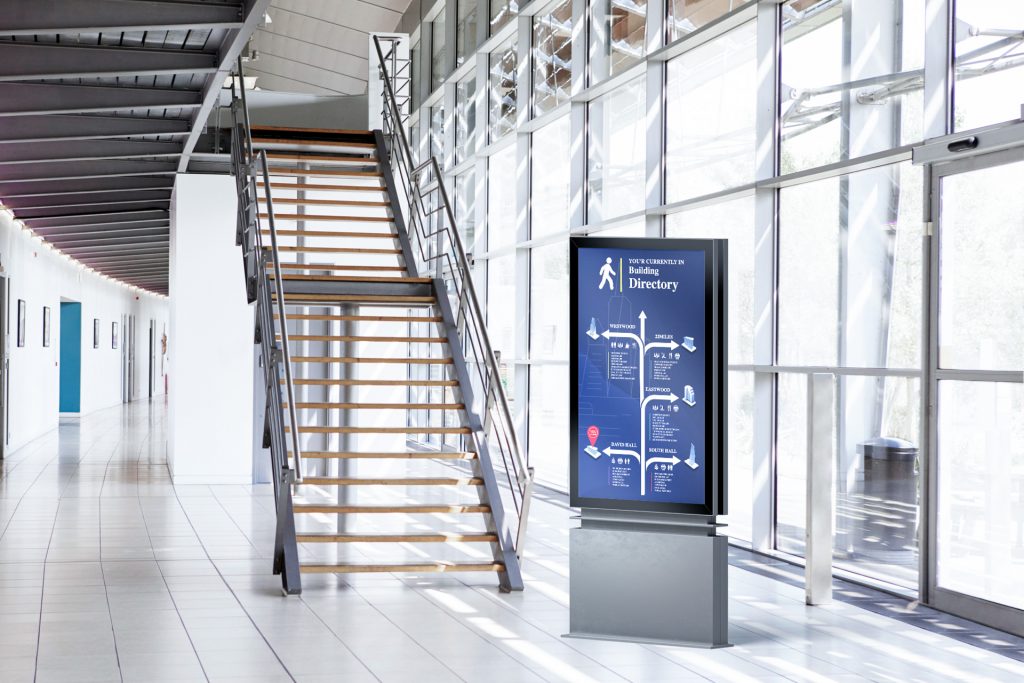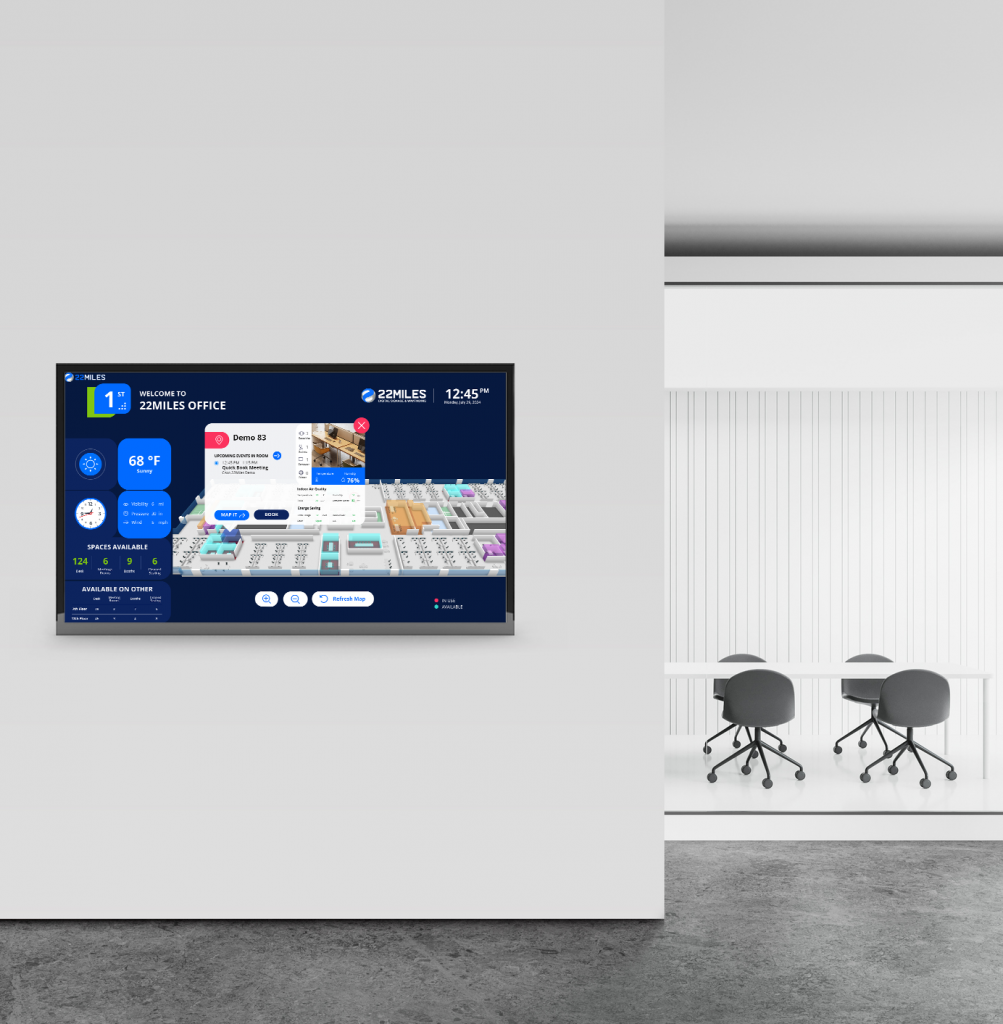January 9, 2024
Last year was a big year for phygital spaces. In 2024, we saw phygital trends and successes emerge as a hot topic in various news outlets from The New York Times to Forbes to LA Times. Music artists have long been incorporating digital elements into their concerts to create immersive experiences, but Taylor Swift took it to a new level with her recent Eras Tour.
“Phygital” refers to the blending of digital experiences with physical environments.
Retail brands like Nike, Ikea, and Warby Parker have gamified shopping with phygital solutions. Netlfix announced the launch of Netflix House, an entertainment venue that immerses fans in the phygital world of their favorite shows like Squid Games or Bridgerton. Russia held the very first annual phygital multi-sport tournament last year, including sports like phygital football, phygital basketball, phygital racing, phygital dancing, and more.
In 2025, we can only expect phygital trends to completely take off. But before you brush off this trend as too frivolously futuristic or only for the big guys, consider the small steps your business can take to prepare for our phygital future. From the higher education sector to healthcare to transportation to retail and hopitality. We’ll cover some the 5 key phygital trends to watch that won’t break the bank but will prepare your business for increasing competition.
Key Phygital Trends to Watch
These are our top picks for phygital trends to watch in 2025:
Dynamic Digital Signage and Video Walls
Dynamic digital signage and video walls create responsive, real-time communication within physical spaces, adapting their content based on digital inputs, such as user interaction or live data feeds. These phygital solutions can be leveraged to market to visitors, streamline staff operations, or even enhance the ambiance of a space with stunning digital art.
Digital signage and video walls can address challenges across industries, such as:
- Improving Your Higher Ed Campus Connection: In higher education, dynamic signage fosters better communication with students by sharing real-time updates, event promotions, and campus news. For example, a university might use video walls to display live social media feeds or highlight student achievements, creating a stronger sense of community.
- Streamlining Healthcare Operations: In healthcare, digital signage can be utilized to educate patients and relieve staff burnout. For example, a hospital could deploy digital signs to direct visitors efficiently to the right department or notify them of wait times, improving both patient satisfaction and staff productivity.
- Better Dining Experiences with Interactive Hospitality Kiosks: The hospitality industry has seen great success in deploying interactive digital signage kiosks where customers can place orders on their own time. In fact, research shows that most customers prefer ordering from a kiosk because they can order without perceived judgment.
- Brightening Public Spaces: Airports, hotels, museums, or corporate offices often utilize video walls to feature dynamic art installations or scenic visuals, elevating the physical space and leaving a lasting impression on visitors.
By merging digital adaptability with physical presence, dynamic signage and video walls streamline customer experiences and staff taks alike, all while adding a “wow” factor to your interior design.
Interactive Wayfinding
Interactive wayfinding solutions merge digital navigation tools with physical spaces to provide seamless, user-friendly guidance. By integrating touchscreens, mobile devices, and real-time data, these phygital tools empower users to easily navigate complex environments while improving operational efficiency and engagement.
By now, the average user is pretty accustomed to solutions like Apple Maps or Google Maps for walking, driving, and even transit directions, but indoor wayfinding requires more intricate solutions because of complex floorplans and accessible routing requirements.
Indoor interactive wayfinding can solve challenges across industries, such as:
- Enhancing Campus Navigation: Universities can deploy interactive wayfinding kiosks that provide turn-by-turn directions for students and visitors. For example, a student might use a touchscreen kiosk to locate their next class and transfer the directions to their smartphone. During campus emergencies, wayfinding solutions also offer accessible routes for students and staff to navigate to safety.
- Streamlining Patient and Visitor Experiences in Healthcare: Hospitals can use wayfinding systems to guide patients to their appointments or visitors to their loved ones. For instance, a digital map kiosk in a hospital lobby could provide step-by-step directions to specific departments or rooms. This improves punctuality for appointments and alleviates staff from answering pesky navigation questions.
- Optimizing Guest Navigation in Retail and Entertainment: In malls or amusement parks, interactive wayfinding screens can guide shoppers to stores or visitors to attractions, while integrating promotions or ticketing options. For example, an AR-enabled map might overlay digital arrows in real time to lead visitors to a restaurant or ride (more on that in the next section!).
- Improving Event Navigation: Convention centers and large venues can utilize wayfinding tools to help attendees find sessions, exhibits, or amenities. For instance, an interactive floor plan at a trade show could allow users to search for booths by exhibitor name or category. This creates a more organized and enjoyable experience for attendees and vendors alike.
Interactive wayfinding enhances usability, reduces friction, and adds value to both the user experience and operational efficiency. These solutions are transforming how people navigate complex spaces in a connected world.
Augmented Reality
Imagine pointing your phone at a building and instantly seeing the fastest route to your destination, or trying on an outfit without stepping into a fitting room. This is the power of Augmented Reality (AR) — a groundbreaking fusion of the physical and digital worlds. AR transforms everyday interactions by layering dynamic, virtual elements over real-world environments, offering experiences that are not only functional but also captivating and unforgettable.
From navigating sprawling campuses to creating immersive retail and entertainment experiences, AR is revolutionizing how we interact with the spaces around us.
AR experiences can address challenges across industries, such as:
- Enhancing Navigation: AR wayfinding provides users with real-time, interactive navigation aids across industries. For example, airports or large campuses can deploy AR-enabled apps that overlay digital arrows or markers on a smartphone screen, guiding users to their destination, simplifying navigation in complex spaces, reducing frustration, and improving accessibility for all users.
- Elevating Retail Experiences: AR helps shoppers visualize products in new and exciting ways. For instance, AR-enabled mirrors or apps can allow customers to virtually try on clothes, preview furniture placement in their homes, or scan items for detailed product information and personalized promotions. These better-than-real retail experiences increase customer engagement while improve purchase confidence.
- Engaging Event Attendees: Tradeshows and entertainment venues can use AR to provide interactive maps, exhibitor information, or gamified activities. For example, AR-enabled event apps can show users virtual paths to specific booths, overlay exhibitor details, or offer scavenger hunts with digital rewards. Augmented reality is one of the best ways to encourage and gamify venue exploration.
- Revolutionizing Entertainment and Tourism: Transform passive observation into dynamic participation! AR brings physical spaces to life with interactive storytelling and immersive visuals. For instance, museums can use AR to display 3D reconstructions of historical artifacts or animations that enrich the visitor experience. Theme parks can also integrate AR into rides or walking tours to make attractions more engaging.
Augmented reality is one of the most futuristic phygital trends to gain momentum in 2025 and it is arguably the best strategy to gamify navigation and shopping experiences. If you’re looking to boost sales and customer engagement, consider AR!
IoT and Smart Sensors
The Internet of Things (IoT) and smart sensors are among the most environmentally friendly phygital trends to emerge. By collecting and analyzing data from interconnected devices, these technologies allow spaces to respond in real-time, optimizing everything from lighting and temperature to security and energy usage.
IoT and smart sensors can address key challenges in sustainability, energy efficiency, and user experience across industries, such as:
- Workplace Efficiency: In modern offices, IoT-enabled devices like Meraki can monitor air quality, temperature, and even desk occupancy while integrating with digital signage for better visibility. Smart sensors in meeting rooms or open-plan offices can adjust lighting and HVAC systems based on occupancy and environmental conditions. This creates a comfortable, productive environment while reducing energy consumption and optimizing resource use.
- Sustainability and Energy Efficiency in Higher Education: In classrooms or library study rooms, IoT and smart sensors can ensure optimal conditions for both learning and energy savings. Smart lighting systems can automatically adjust based on the time of day or occupancy, while temperature controls can adapt to class schedules and room occupancy. For example, if a study room is unoccupied, sensors automatically turn off lights and adjust the temperature to save energy.
By making spaces more responsive and efficient, IoT and smart sensors are driving innovation in sustainability, energy management, and user experience. Whether it’s enhancing comfort in classrooms or reducing energy waste in workplaces, these technologies are shaping the future of eco-friendly phygital spaces.
By merging the physical world with virtual enhancements, AR offers innovative solutions to improve navigation, interaction, and engagement. Whether helping visitors find their way or creating unforgettable experiences, AR is shaping the future of phygital innovation.
AI and Automation in Digital Signage
AI is revolutionizing digital signage by streamlining content creation, enhancing interaction, and automating processes to provide more personalized, responsive experiences. Whether it’s simplifying the creation of dynamic content or enabling real-time, AI-powered interactions, AI is transforming digital signage into an intelligent, efficient tool for communication.
AI can address the challenges of content creation and user engagement by:
- Streamlining Content Creation and Map Making: AI can automate the creation of digital signage content, making it easier for organizations to design, schedule, and update content across multiple displays. AI-driven tools can generate dynamic, visuals that adapt to real-time conditions, reducing the need for manual intervention. This saves time, reduces human error, and ensures content is consistently relevant and up-to-date.
- Conversational AI on Digital Signage or Kiosks: AI-powered digital signage or kiosks can integrate conversational interfaces, allowing users to interact with the system through voice or text. By enabling natural, real-time conversations, these systems can answer questions, provide directions, or offer personalized recommendations based on the user’s needs. In a shopping mall, a kiosk with conversational AI could assist customers by answering product-related questions, helping with store navigation, or providing event schedules—all through voice or touch. Similarly, AI chatbots on digital signage can respond to user queries about product details, promotions, or store hours.
- QR Code Integration for Conversational AI: QR codes on digital signage or kiosks allow users to scan and instantly access conversational AI features on their smartphones. Once scanned, the AI can guide users through the experience, providing tailored information or facilitating interactions based on the user’s specific context or location. At a university campus, a student can scan a QR code on a digital sign to interact with an AI chatbot that provides real-time directions to classrooms or events. This makes information more accessible and reduces reliance on physical signage or staff.
Whether automating content updates or providing real-time, personalized assistance, AI solutions are making phygital spaces smarter and more efficient than ever before.
Embracing Phygital Spaces in 2025 with 22Miles
2025 is poised to be the year phygital solutions redefine the way we experience spaces, both physical and digital. From dynamic signage to immersive AR experiences and smart, sustainable environments, these trends are transforming industries across the board.
For businesses looking to stay ahead, embracing phygital solutions is no longer a luxury but a necessity. Explore innovative ways to merge the physical and digital worlds and create experiences that engage, delight, and empower your customers.
Ready to bring these transformative solutions to your business? Book a demo with 22Miles and start your journey toward a phygital future today.


